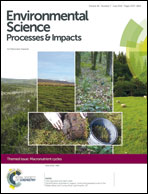Design of a downscaling method to estimate continuous data from discrete pollen monitoring in Tunisia
Abstract
The study of microorganisms and biological particulate matter that transport passively through air is very important for an understanding of the real quality of air. Such monitoring is essential in several specific areas, such as public health, allergy studies, agronomy, indoor and outdoor conservation, and climate-change impact studies. Choosing the suitable monitoring method is an important step in aerobiological studies, so as to obtain reliable airborne data. In this study, we compare olive pollen data from two of the main air traps used in aerobiology, the Hirst and Cour air samplers, at three Tunisian sampling points, for 2009 to 2011. Moreover, a downscaling method to perform daily Cour air sampler data estimates is designed. While Hirst air samplers can offer daily, and even bi-hourly data, Cour air samplers provide data for longer discrete sampling periods, which limits their usefulness for daily monitoring. Higher quantities of olive pollen capture were generally detected for the Hirst air sampler, and a downscaling method that is developed in this study is used to model these differences. The effectiveness of this downscaling method is demonstrated, which allows the potential use of Cour air sampler data series. These results improve the information that new Cour data and, importantly, historical Cour databases can provide for the understanding of phenological dates, airborne pollination curves, and allergenicity levels of air.


 Please wait while we load your content...
Please wait while we load your content...